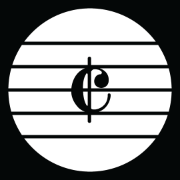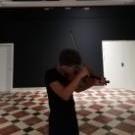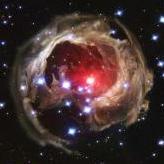Leaderboard
Popular Content
Showing content with the highest reputation on 07/05/2023 in all areas
-
Greetings. I want to present a piano composition I finished recently. This short étude, written in C-sharp minor, is a toccata-like "show-off" piece designed to allow the performer to display his playing skills. This étude also emphasizes the agility of the weaker fingers of the right hand. I was in a state without inspiration when writing this piece, so most parts of the composition were notated spontaneously. Also, I implemented Mike's techniques in enhancing playback realism, so the playback should reflect my interpretation of this piece. Any feedback is appreciated, and I hope you enjoy this piece! Carl Koh Wei Hao2 points
-
Hi everyone, Here is the final movement of my Piano concerto in C minor. I began composing it in the first lockdown of 2020 (!), and finally managed to end this (time-consuming) work. The final movement is a rondo. I will surely write the plan of the movement in the next hours even though it is quite clear. I use the main theme of the concerto in this movement (the one of the first movement). If you want to be familiar again with the other movements of this concerto, here are the links: Finally, here are the PDF and audio of the 3rd movement:2 points
-
Hello guys. I am working in this group of two musical poems. Listening to a lot of Scriabin and Rachmaninoff is helping me to discover a new world. I must warn I am very busy right now with my interpretation classes and I barely have time to compose, so the second one will take more time.2 points
-
Hi! This is the second draft of a String Quartet I've written. This is just the first movement. I'd like to get some feedback! (For some reason the file name doesn't have the #) OH and the playback took it really slow, it's more towards the bar = 80 or 90 or so.String_Quartet_in_C_minor.pdf String_Quartet_in_C_minor.mp3 String_Quartet_in_F_Movement_II.mp32 points
-
Yeah but I mean the stableness of the chord there, since there are some restrictions on using a second inversion chord like a cadential one, a passing one or an apreggiating one, and to use it without clear intent can cause some unwanted unstableness there. So you mean there you have already returned to the tonic C# minor? But there is no cadence to notify that. Also for a Neapolitan chord is more normally to have the bass going upward to resolve to a V or I 6/4 chord, instead of having the bass going downwards to a I6 chord and have the phrase rest on a III chord. It's with the III chord the E major chord that I think it's going to A major with the E major being a pivotal chord and the hint from a D natural. Yup that's my mistake to overlook that part as a retransition lol. But I may add a unison before each isolated solo passage to enhance that isolated feeling with more contrast. What do you think? I think an E is absolutely fine as it signifies an augmented chord in b.185. What is the chord you are having in your mind? Haha you should! This is absolutely my all time favourite 😁! Thx! But the quality of that piece is bad 😭 Thx for your reply Nadav! Henry2 points
-
Thanks a lot! I'll look into this. Well the piece isn't trying to be stable - if it would have all the chromaticism wouldn't have been there... I thought that too, I tried to fix that by adding an actual theme on that but failed. Gonna make another try then. The D natural is the Neapolitan. That's the recap already. The first two phrases. I just added a stop between the parts of each instrument (in the expo there was also an answer in the cello/viola, but this time it didn't fit), to create more of that isolation feel. Yes, I tried a new approach to the recap - trying to get another quality of tone to the same music, not new music. I tried to build the chords there properly, and E wasn't part of the chord in question. I will surely. Actually it's somehow the only one I didn't listen to before my teacher used it as an example yesterday.2 points
-
Hey @Beethoven is God, Beethoven is my God too! Do you also take inspiration from his op.131 quartet for a C sharp minor slow first movement? I feel like there's real pathos in the music, great job on this. There are many interesting harmonic changes in this piece, especially in the development when you make use those enharmonics to modulate. -The 7 bar phrasing for the beginning can seem unbalanced in this style but I think it's fine. -I think the modulation to the 2nd group in E major is not well prepared since there's never a half cadence into the key. I think you can have some B major harmony before getting into E major! -For b,26-39, I'm wondering the G# bass, since it's causing some instability in the music, either forming the I6 chord or the vi6/4 chord. I like the rhythmic variety here esp. in b.34. -I love the usage of suspension in b.41, and it's tragic. However under this slow tempo the section can seem too long and directionless. Your use of enharmonic here is wonderful, like b.46. The G natural in b.43-44 should be a F double sharp though. -The structural closure of this part is not so clear as there's never a cadence happening, either a PAC on E major or just a interrupted cadence to smoothly transition back to the tonic to the exposition repeat. The D natural suggests A major more but it's never raised later. -I think the harmonic colour of the development section is great, but the rhythm not so as it sustains the thick immobile texture of b.40. I think changing the texture and rhythm at the beginning of the development will add more varieties and drama to it! It also helps pushes the climax to higher excitement. _ I love the soliloquy in b.120 by the cello, but it seems to much for me to have the other three instruments to have their solo parts too before getting to the recap. It's seems more like an anticlimax here. -The recap is more or less the same as the exposition. I love your ending and I think the texture fits here more instead of in the development. It reminds me the opening movement and finale of Shostakovitch's String Quartet no.8. Why do you need that D double sharp enharmonic instead of E natural? Is it that you want to have the tone to be sharper? P.S. For me I think this is absolutely qualified to be posted to the Chamber Music forum so I move this to there! P.P.S I have a String Quartet in C sharp minor too but that piece is really bad and you may take a look into it lol: Thx for sharing and joining us! Make sure to check posts from other members as well. Henry2 points
-
Hey Guys, I composed this today. I'm curious about what you think. Please, leave a comment! (I hope the SoundCloud player won't disappear! 😄)1 point
-
I don't always write in Classical style, and this Piano rag is proof. My friend Bernie Siben told me he very much enjoyed William Bolcom's "Ghost Rags," especially his "Graceful Ghost," as have I, so I thought I'd write my own somewhat creepy, mysterious ragtime piece, and this was the result, hence its name. It's challenging to be sure, but I have it on good authority from two virtuoso pianists that it's doable. I hope you enjoy! "Enigmatic Slow-Drag" - Ragtime Two-Step for Piano (2020). To my friend Bernie Siben, with gratitude for his kindness and support. - Composed August 17 – 23, 2020 at Austin. - Style: American Ragtime, ca. 1910-1915. - Duration: 05:32 - Electronic Rendering by Finale 26 music notation software’s "Human Playback" with NotePerformer 3 artificial intelligence assisted interpretation.1 point
-
@Thatguy v2.0 Thanks Vince! I'm glad you liked it. Also, your signature is hilarious 🤣 @PeterthePapercomPoser Thank you for listening 🙂1 point
-
Do you have the sheet music for this piece? Maybe edit your main post to include a pdf of the score and maybe someone will record their rendition for you?1 point
-
Hi Nadav, Welcome to the forum! This composition reminds me of Beethoven's String Quartet No. 14, which was also written in the same key. Your string quartet has a coherent structure, and the sombre character of this music is well-conveyed. Great job! My favourite parts of this piece are bars 41-61 and 165-186. Your use of enharmonic suspensions to develop tension throughout the music is brilliantly executed, and the lack of cadences creates a strong desire for the piece to resolve to the tonic. Very well done! This is what I aspire to have in my future compositions. I also like the brief rests throughout the piece, especially at bar 91. It's like giving the music a moment to "breathe." Besides, the passage in bars 129-140 is beautiful: it resembles a conversation between the four instruments, and the silence between the dialogues gives a feeling of solitude. Overall, this string quartet is a thoughtful piece. However, the transition to the C-sharp minor chord in bar 198 may be slightly off due to the parallel fifth between the cello and the second violin and the parallel octave between the cello and the first violin. You might want to reharmonize this passage. Thank you for sharing this piece! Carl Koh Wei Hao1 point
-
I'll look into it with my teacher. Actually thinking of it starting the dev on A major might be interesting.... I'll take a look at that for the third draft.1 point
-
Thank you, Peter! I appreciate your criticism. I started it not with the tonic because you mentioned earlier several times, so this decision was conscious. Do you know a pianist who can play this piece of music? I have been searching for pianists, but it really hard to reach them. 😄1 point
-
honestly if u really really want to get serious about producing your own scores, there is way way way better software out there.1 point
-
This is great! It brings to mind the glistening light of the moon on a stream of water. When the piece speeds up it also gives the impression of the stream speeding up and the moonlight being scattered more wildly by the water. From a music theory perspective, I really enjoy how the main theme starts on the subdominant chord. For me this is confirmed by the ii - V progression that you insert before a deceptive cadence back into the iv. Of course you modulate quite a lot in this piece and you don't end in the same key that you started in, so the actual tonal center of the piece may be considered ambiguous and up to interpretation (for which it would also be nice to have a score). I interpret the main key of the piece to be F minor owing to the fact that the main theme, both in the beginning and when you return to it is in that key. Thanks for sharing this very affecting piano piece!1 point
-
Hi @Carl Koh Wei Hao, This one is a pure joy. My favourite part of it is b.54 onward. The harmony there is so great. The cadenza is wonderful with such a grand virtuosic Chopin like style. The voice leading throughout the etude is very carefully planned. The practicing target is perfect combined with musicality here. Very well done! @chopin you will be very happy on this! Thanks for sharing! Henry1 point
-
Many thanks for the info. That looks like a great package! I bought Logic recently; but haven't really got into using it yet. Will have to try, because the dynamics handling on Muse Score is really bad!1 point
-
1 point
-
1 point
-
1 point
-
Wow, it's a very fast-paced piece but it holds your interest the whole time. I often don't like "studies" too much because they are too technical and less "pretty". But this one is an exception.1 point
-
The mysterious vibe created by the high repeating ostinato is rudely interrupted by the sforzando crescendo to fortissimo chords which are very jarring, as I guess you intended. I also like @Henry Ng Tsz Kiu's interpretation. The high ostinato is very foreboding and sets the stage for the huge contrast that you accomplish with the sforzando chords. There is however deep unease in both of the polar opposites presented in the piece. Great job and thanks for sharing!1 point
-
Dude I love this Yeah I'll say, that was instantly my first impression. The anticipation for what's next is seat-gripping. This piece is very atmospheric, as in I really like how harmony and rhythm are at the forefront without any sort of melody to follow along. The mood is brooding and mysterious, and the syncopations are clever and tact. I like the improvised style of the form. To me it's like an ABABA, where the A sections are the suspenseful open textures, and the B parts are more driven with the louder and heavier rhythms. You're quite the composer, my friend. This was really cool to listen to (several times 😄). I'm glad you're back man, can't wait to hear what you share next.1 point
-
ACTUALLY NO, I DIDN'T INTEND TO DO THE DIES IRAE I only realize that when I was typesetting up to 5:43 where it starts to sound like Ysaye's Sonata No.2 with that theme XD That cresc. may actually work... I may actually add a crescendo for that XD1 point
-
RAGTIME! Your writing amazes me, it makes me feel like a noob. It's interesting to hear your take on the style coming from your classical-drenched style. Phrasing, counterpoint, harmony, form, it's all wonderful to my ears. I also really like your twist of making ragtime mysterious or creepy, as you say. I think you pulled this off well. I wish I had something to offer for feedback, but as you're an experienced composer who has found his niche and style of composition in this world, I'm not surprised I don't have anything critical to say. However, I will say that note performer's piano is very "wet" sounding. I use it too (but with Sibelius), and I have yet to tinker with it to know if you can make mixing adjustments adequate for a more realistic performance. I normally import midi files into a DAW and use other piano samples for my music, and your music is too good to not do the same. Do you have any experience with a DAW? Sure, if you get a performance then who cares about that. But it might be worth your time to check into it if you're interested. I rummaged around on your YT page, you have quite the catalog of fine works. I'm just really impressed with your music, and am very happy you decided to grace the forums once again with your activity. Stick around! We need more outstanding composers such as yourself around here (I've been around off and on for a long time as well, and it seems like the drama/toxicity that once plagued this place is a thing of the past lol, if that was your reason for leaving as it was mine 😄 ). Thanks for sharing, I'll be sure to look out for more posts from you.1 point
-
@chopin Thanks for giving this a look/listen! I'm really excited that you're so jazzed about it! I didn't know this about you! I just always assumed Chopin was your first love. Yup, once the key changed in the Trio to the relative major, and later to the enharmonic major, I couldn't possibly keep Joplin's influence from sneaking in. No Bolcom here! Interesting you mention the Magnetic Rag - it's one of my favourites, and the only Joplin rag I can play; it's significantly easier than many of the others (probably because by 1914 when it was written, Jopliln was suffering terribly from tertiary syphilis, which interfered seriously with his playing ability). Anyway, I'm gratified you sensed The Master looking over my shoulder. Ah, the ending - my favourite part of the piece. I wish I could say I had any ulterior motives of captivating the audience, but I just couldn't seem to let it go where it may have seemed to "want" to, as you pointed out. It was a pure stroke of inspiration, from the chromatic descent at measures 97 and 98, to the purposely muddy penultimate measure, to the last, where it all grinds to a satisfying halt; all this is a convenient four measure phrase, making it all the more rounded off. I'd be honoured! Just let me know when you're ready, and I'll get you a MIDI. Thanks again, and I'm so glad you enjoyed this!1 point
-
What a completely different stylistic change compared to your Symphony 9! I have to say, ragtime music was how I got started with the piano, so this type of music has a special place in my heart. The beginning of your piece is really cryptic and dissonant. I love it! About 3 minutes in, this is when I started to get Scott Joplin vibes, more specifically with the Magnetic Rag. And the clear winner of this piece is your ending which I'm not even sure how to express my feelings around it. Perhaps I can describe your ending as an anticipatory ending. It's really a great way to come to a conclusion. For example, at 5:17, that could have been a conclusion right there. And then again at 5:22, that could have been the conclusion. But you string the listener along, and actually conclude it at 5:28, which is a really sneaky way of drawing the listener in, in my opinion at least. BTW, I'm going to see how my next video does around "transforming a midi file into a performance". Basically the idea is to take a midi file without performance data, and make it sound more like a performance. If this video resonates with my audience, I would actually love to use this piece as my next example. Especially because you have performance data. It would be a challenge for me, but I think I can make your piece sound more like a performance, despite Finale's human playback + NotePerformer. If you are up for it, let me know as I would need your midi file. Love the piece! And you'd potentially be the star in one of my future playback series videos!1 point
-
Well, I finally finished this piece. This is the second and last work of the 2 poems. I hope you enjoy!1 point
-
Hi everyone, For those who don't know me my name is Camille, I'm French and I'm 17 years old. I'm familiar with classical music and orchestral litterature and I often compose for piano and orchestra. These last 3 months I composed a piano concerto in C minor. This is my big project of the moment and also the one that took me most time to compose. I create this topic to share the first movement of this piano concerto. It lasts about 17 minutes and follow a strict sonata form. I took the habit to compose a piano concerto per year and this is what I consider my most accomplished piece so far. Here is below the score and the audio. Enjoy the music, and, please, tell me your opinion about this composition. STRUCTURE OF THE MOVEMENT : INTRODUCTION : M. 1-31 (Moderato, TEMPO I) : Orchestral introduction, statement of the first “theme” on cellos and violas. Dramatic crescendo until the piano entrance M 31-39 : brief piano cadenza allowing the listener to be more familiar with the main theme/material of the piece. Little arpeggios … EXPOSITION: M. 40 – 76 (Allegro) : This is the one ! After a short motif used later in the concerto (in the cello/bass part) statement of the THEME 1 A (violins parts) that as been stated in the introduction. Repeated in piano part m.57. The reappearance of theme 1A leads to a dramatic climax m.70 (being the continuity of 1A). M. 77 – 120 (Vivace) : THEME 1 B. Much faster, this theme consists of a repeated eight-notes pattern in the woods. The piano responds with an avalanche of sixteenth notes. Until m.120, strings are an accompaniment. Main motives are stated in the woods (such as the motif m99, flutes and oboes, it will appear later in the development). The pianist is showing is virtuosity in his modulating part and is assisting the orchestra. M17-20 : end the of first theme with a frenetic climb. M 120-127 : Transition to THEME 2. The piano part is quoting 1A and the clarinets are stating a thematic material of transition later used in the development. The rhythm seems to slow down allowing a quasi-cadenza in piano part (m127) leading to… M 128-150 (Andante) : THEME 2A. Lyrical theme (piano part) that appears 3 times, each one being richer in accompaniment and chord. The 3rd one is introduced by the clarinet material OF m120-127. M 150-169 : THEME 2B : consisting (mainly) of one quarter note and six descending quavers. Again, a virtuosic piano and a support orchestra merges and form a whole for this 2B. M 170-184 : Return of THEME 2A but in a heroic climax where the piano supports the orchestra with arpeggiated chords. Transition with big orchestra chord until… M. 185-194 : ENDING OF EXPOSITION : Theme 2A and 2B are combined but in a the minor key of C to allow the arrival of … DEVELOPMENT: M. 195 – 215 : A repetition of the orchestral introduction with a few small things arranged to lead to the development M. 215 – 250 : Basically THEME 1A is all over the place, dissected, disguised, modulated. Have fun trying to count how many times it appears, you will be wide of the mark lol (You’ll notice, by the way, the transition theme M247, clarinets). M. 251 : 266 : Same thing as m215-250 but with THEME 1 B. M. 267-280 : mish-mash of T1A and T1B leading to CADENZA: M 280-323 : The cadenza is divided in two parts each one being a recapture of T1A. One is aggressive and fast while the other must be played maestoso. M 323-337 (En ralentissant tempo T2) : THEME 2 A being stated in the form of a bucolic love letter leading to M. 339 – 350 (Tempo I) : orchestral introduction allows the arrival of : RECAPITULATION: M. 350 – 383 : THEME 1A is repeated with a long piano speech of with what I called earlier the “continuity of” 1A. M.384 – 404 : THEME 1B (modulations, few changes + new clarinet melody) + transition theme leading to M 405 – 417 : Small piano cadenza, this one could be improvised by the pianist ! Statement of THEME 2 A with big and dramatic piano chords helping the orchestra to achieve the tragic of the moment. M 418 – 421 : THEME 2 B faster and faster. CODA : M. 422 - END (Vivace) : Using of T1A with virtuosic piano passages and symbiosis between soloist and orchestra until the end.1 point
-
Hi all, This is the final edit of the 3rd Movt of my 2nd piano Concerto. I've extended the cadenza and ironed out the wrinkles along the way. For some reason I couldn't stop twiddling with it until I got it to this point, but now that I have, I'm happy to think of it as finished and leave it without further twiddles! I've now started working the material I have for the 1st and 2nd movements so hopefully I might have a completed work in another couple of years 😂. Anyway, I hope you like it and if you did hear the first version, I'd be interested to know what you think of the differences. This particular movement started life a few years ago as a piano improvisation and gradually got molded into what it is now, as did most of the material for the other movements, let's see where they end up!1 point
-
The Etude-Tableau was written for the Moscow Conservatory's 2018 International Winter School, along with the Nocturne in C major, Op. 5, and the Romance in E major. This piece was the first piano piece I had written in over 2 years, and was also my first attempt at virtuoso piano writing. I brought it to the school as one of my piano performance pieces. I later recorded it at home, and this is the performance on Youtube. I hope you all enjoy it. 🙂 Theo1 point





.thumb.png.8b5b433a341551e913a34392660bc95b.png)






